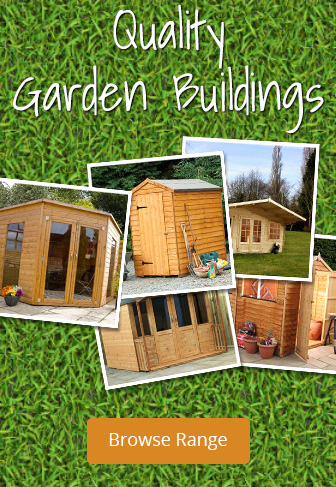How to Insulate a Garden Shed
If you want to use your shed the whole year round, you will benefit from insulating it against the elements as much as possible. This article focuses on how you can do just that.
It is typically much easier to make a good job of insulating a shed if you buy one that is suitable for the purpose. Metal sheds are hard to insulate, as are plastic ones. If you want to do a good job, the best course of action is to invest in a good-quality wooden shed.
With that in mind, let’s press ahead.
Why insulate your shed in the first place?
If you want to use it throughout the year, and you are going to spend some time in it, insulation will be essential. It will help keep the resulting interior temperature more constant than it would otherwise be. By adding insulation, you are making your shed more versatile.
Of course, you wouldn’t need to do this if you only intend to keep garden tools in your shed. But since more and more people are turning their garden sheds into havens and retreats from the main property, it makes sense to insulate yours if you are going to use it quite often. From garden bars to man caves, insulation would definitely make these types of sheds more pleasing places to be.
Which construction should you go for?
Clearly, while you could in theory insulate any shed, it makes sense to buy one that is constructed in a particular way to start with. Why make more work for yourself when it is simply not necessary?
To this end, your new shed should feature two things. The first is a thicker cladding. This provides you with thicker walls which will make it harder for heat inside to escape. The second thing to look for is tongue-and-groove cladding rather than overlap cladding. The latter is cheaper, but the boards literally just overlap each other. This allows for heat to escape between them, and draughts to be let in. In contrast, the tongue-and-groove design means each separate board is tightly fitted to the one next to it. There is therefore much less chance of losing heat.
A great example of a shed that is well-made and set up for insulation is the Hartwood 6’ x 8’ premium tongue-and-groove pressure-treated apex shed. The reason this is a good example is not just because the wall construction ticks the two boxes mentioned above. The floor and ceiling are also made in the same way. The windows are also of high quality, meaning little heat would be lost this way.
If you need a bigger shed, you can invest in an 8’ by 12’ premium tongue-and-groove shed from the same Hartwood range mentioned above. This features six windows along one of the long sides, not to mention double doors at one end. The exceptional build quality of the shed would make it ideal for an insulation project.
The quality of the door (or doors) is important, too. Gaps around a door could negate all the hard work you might put in when you install the insulation. Make sure there are literally no gaps anywhere, otherwise the results won’t be as good as they should be.
Finding and installing the best insulation
When your shed is constructed, you need to take a look at the gaps between the studs. See how deep they are and how far apart they are from each other. Once you have this information, you can see which type of insulation would be best. Blanket insulation, foam boards or sheets of polystyrene could all work; choose the most appropriate thickness and size for your needs. You can then use wood panels to cover the insulation and provide the finished surface for the interior of your shed.
When it comes to insulating the ceiling, be sure to leave a gap between the insulation and the ceiling itself. This will prevent moisture from collecting; it will evaporate instead.
Read the instructions given with each type of insulation too, so you can be sure of how to install it, and whether it will be the right one for your requirements.
Seek advice regarding the manufacturer’s warranty prior to starting
One important point to note regards the warranty every shed will have when you buy it. The length of the warranty may vary between manufacturers, but it is important to know the terms it provides.
You should always check the warranty and the terms included within it, to see whether it will still be valid if you do any customization work. Installing insulation would be viewed as customising your shed, as it didn’t come with it. You may wish to get in touch with the manufacturer so you know where you stand in this respect.



